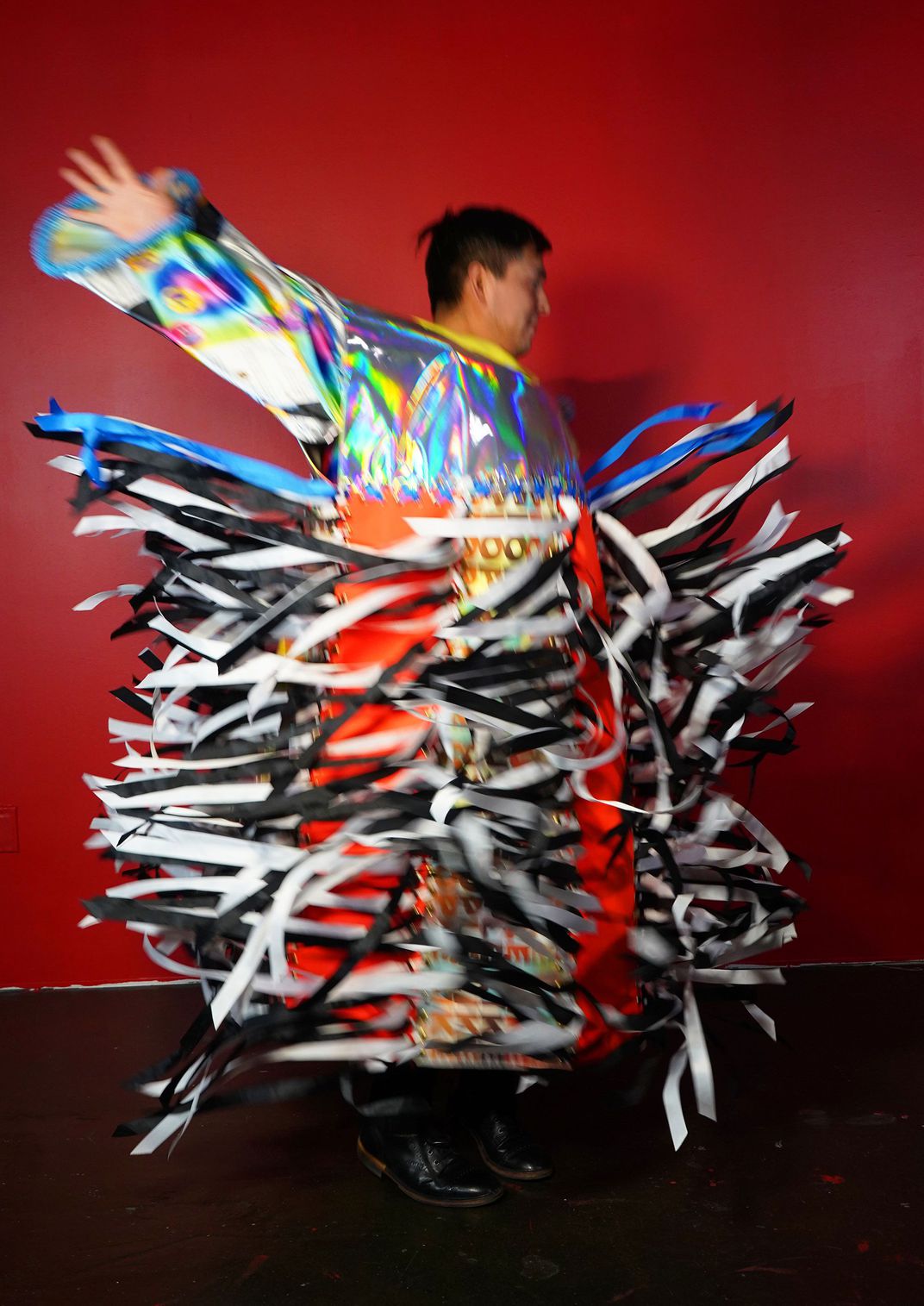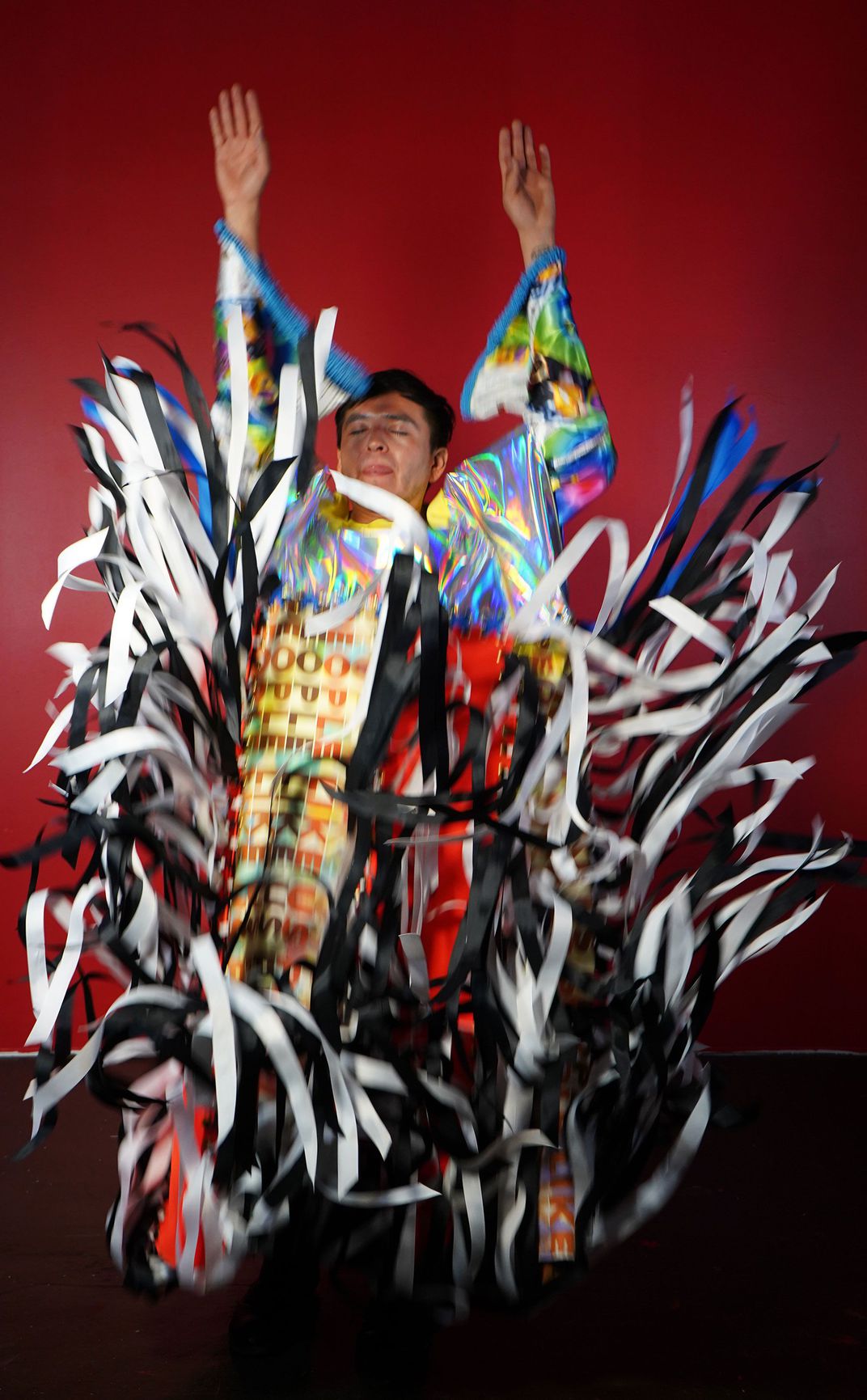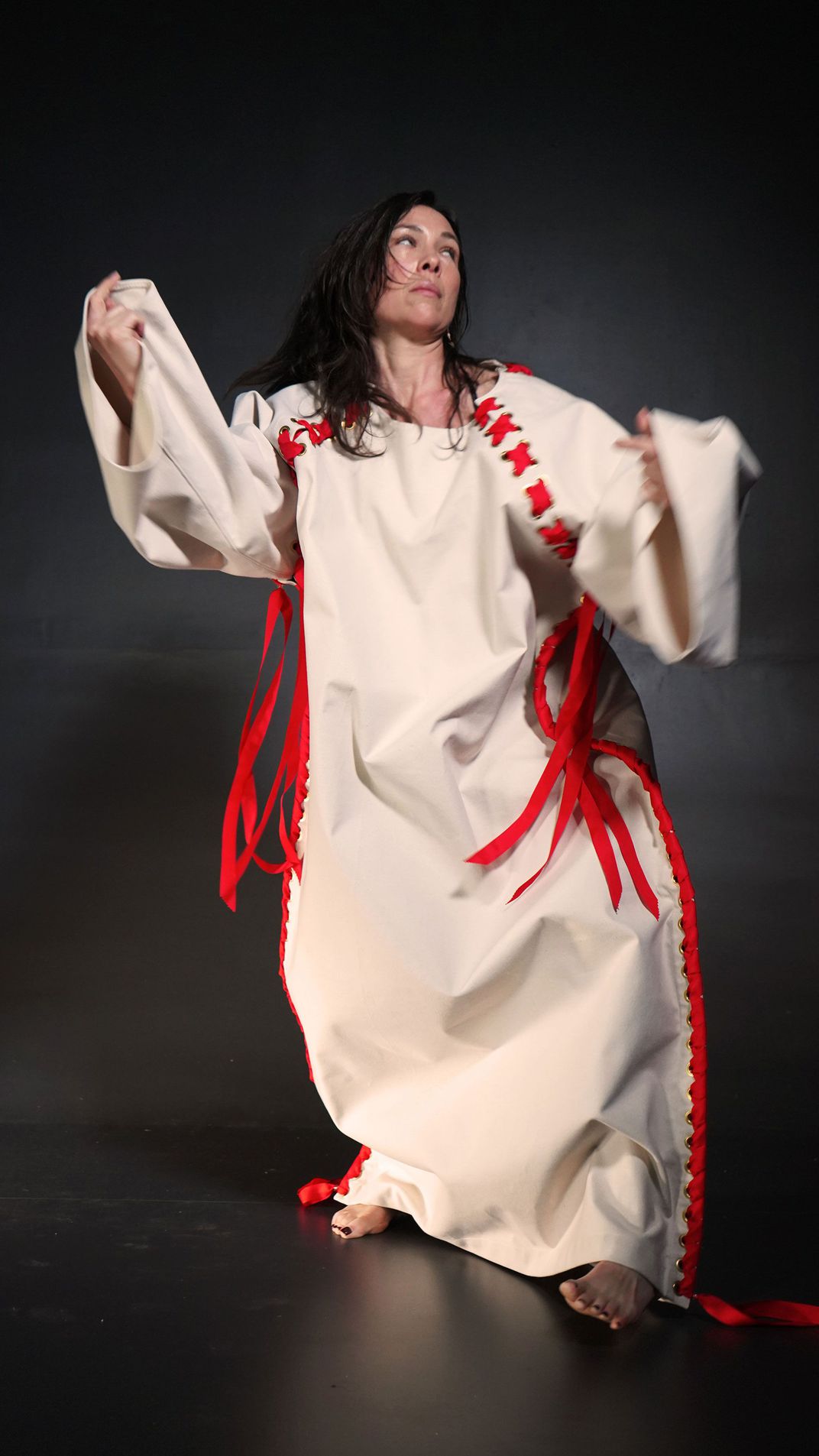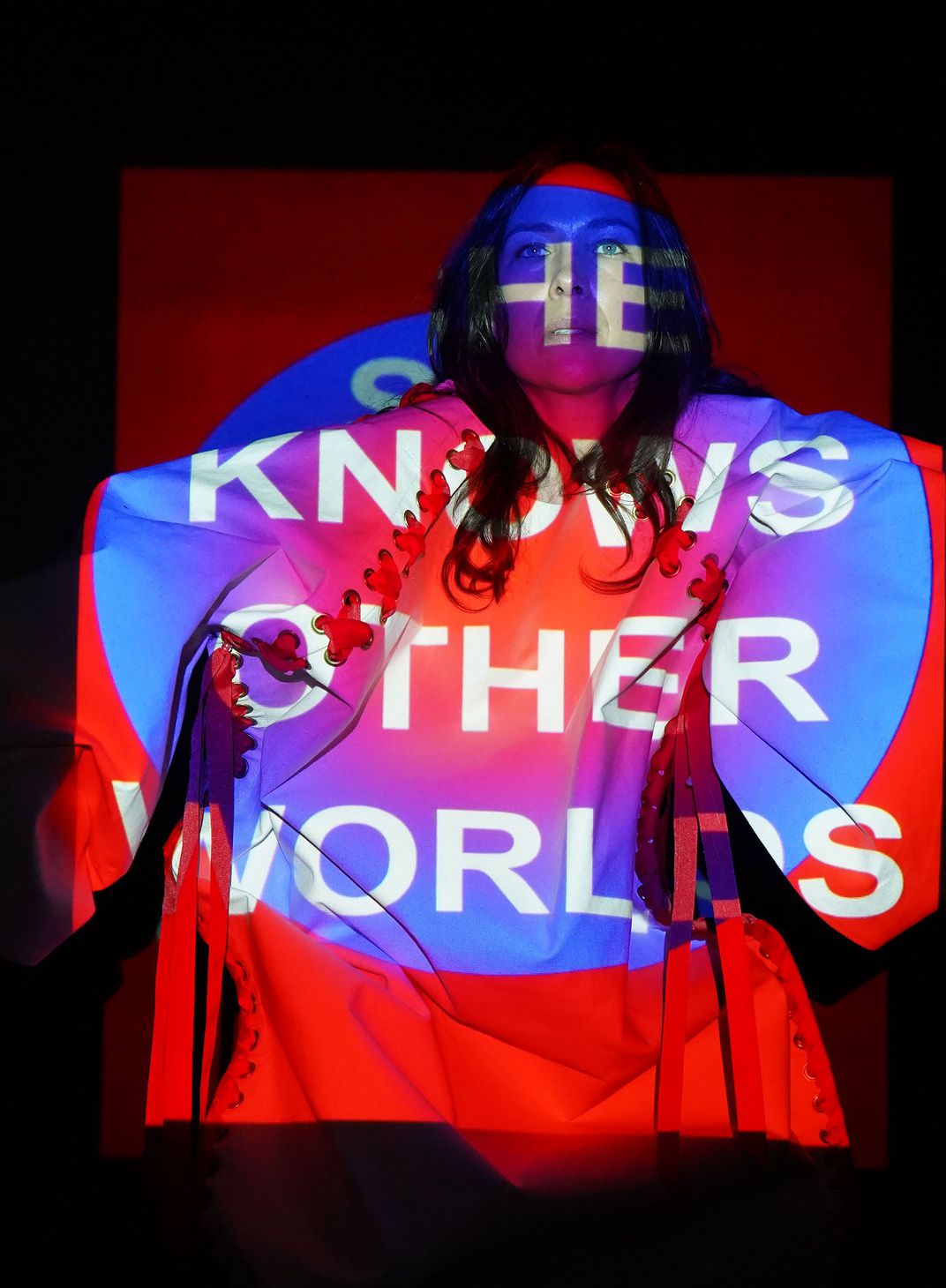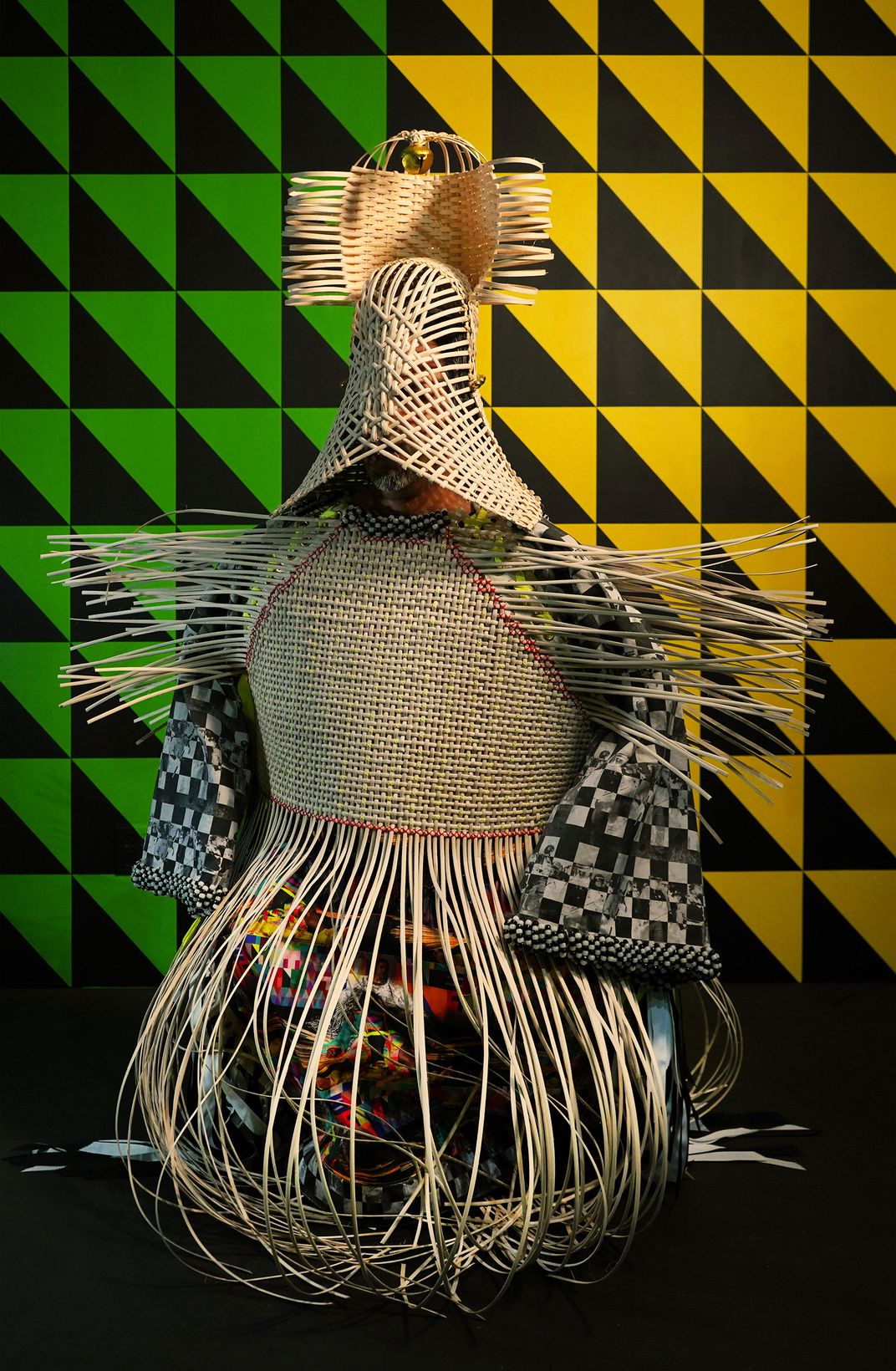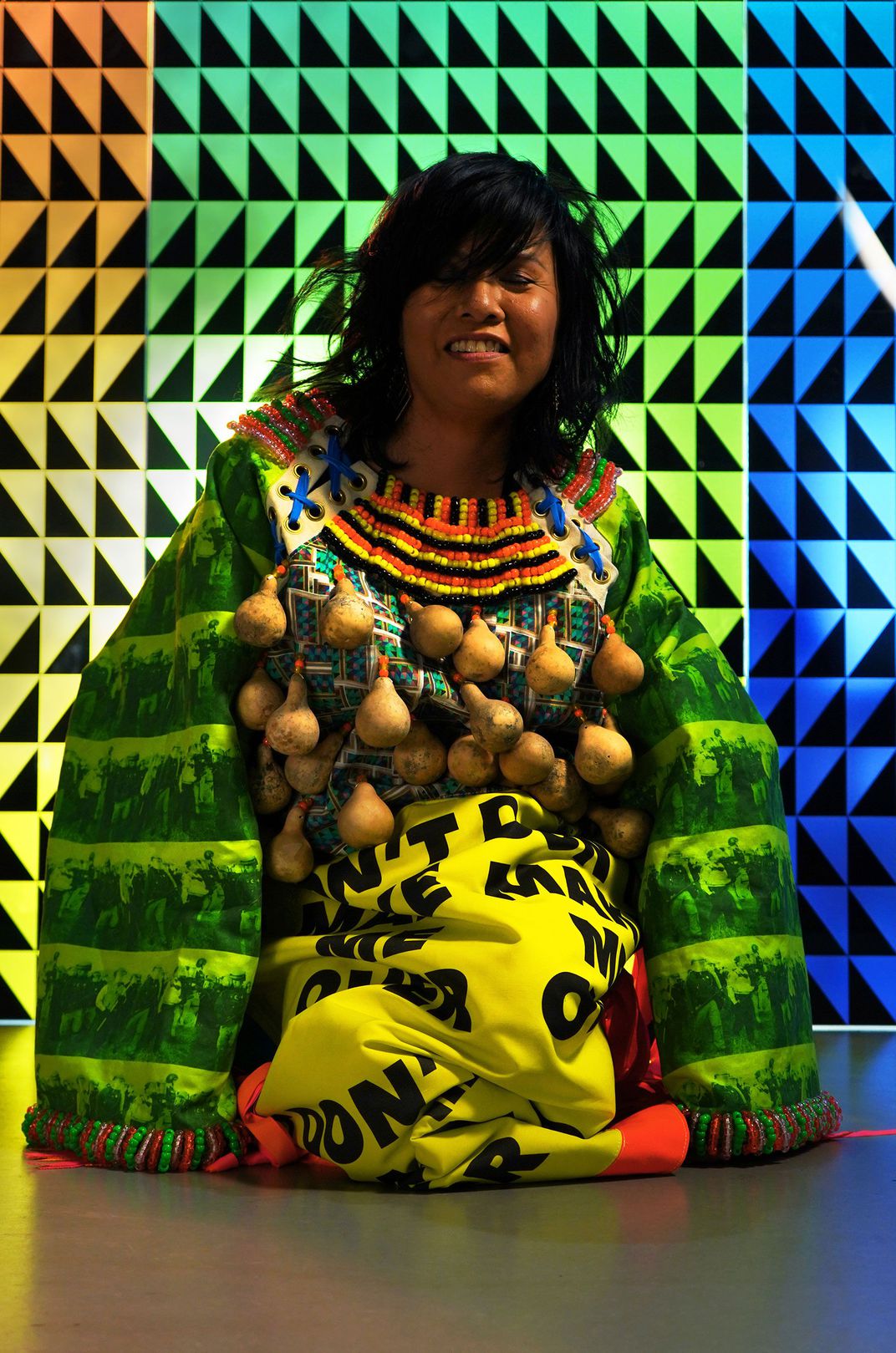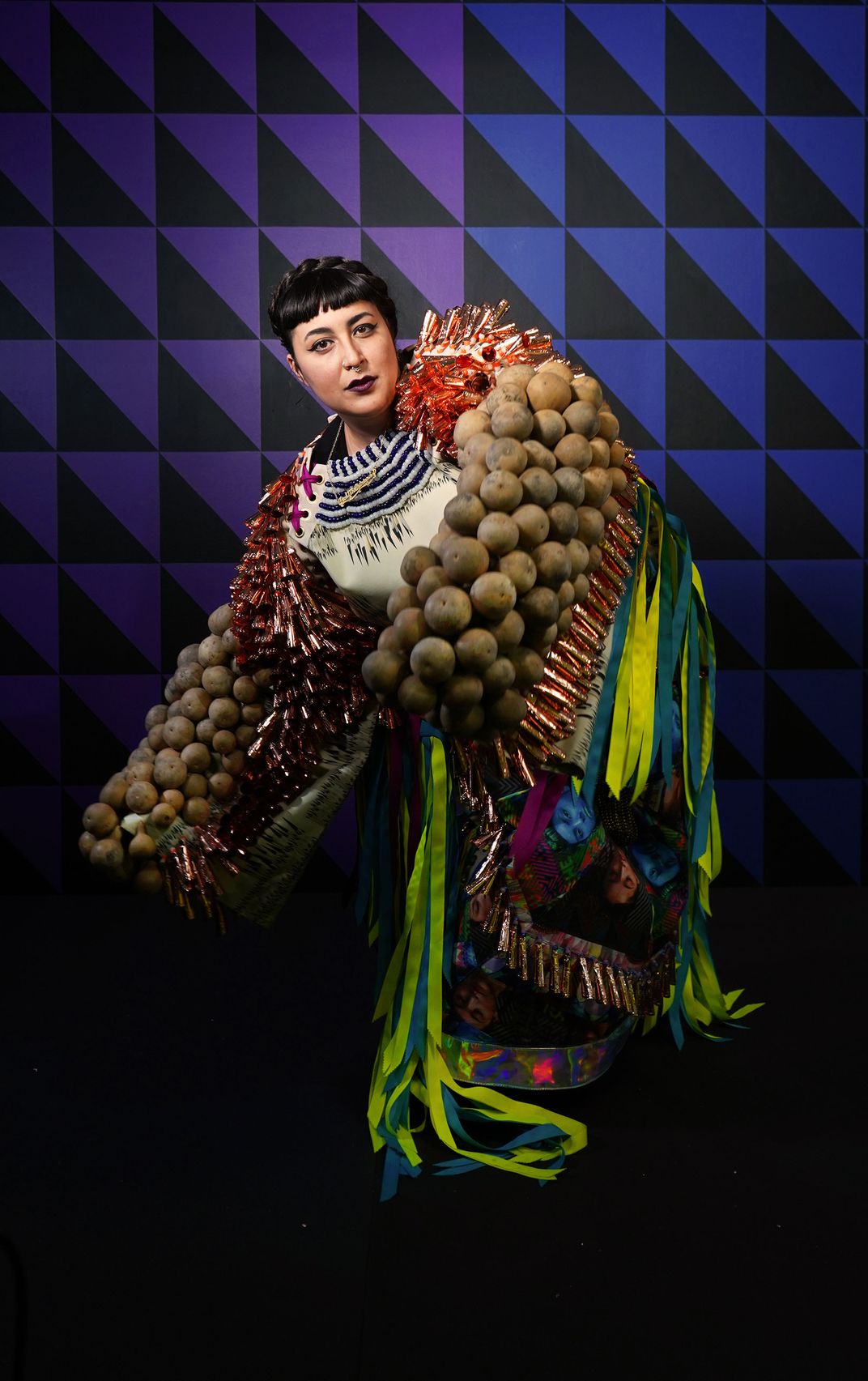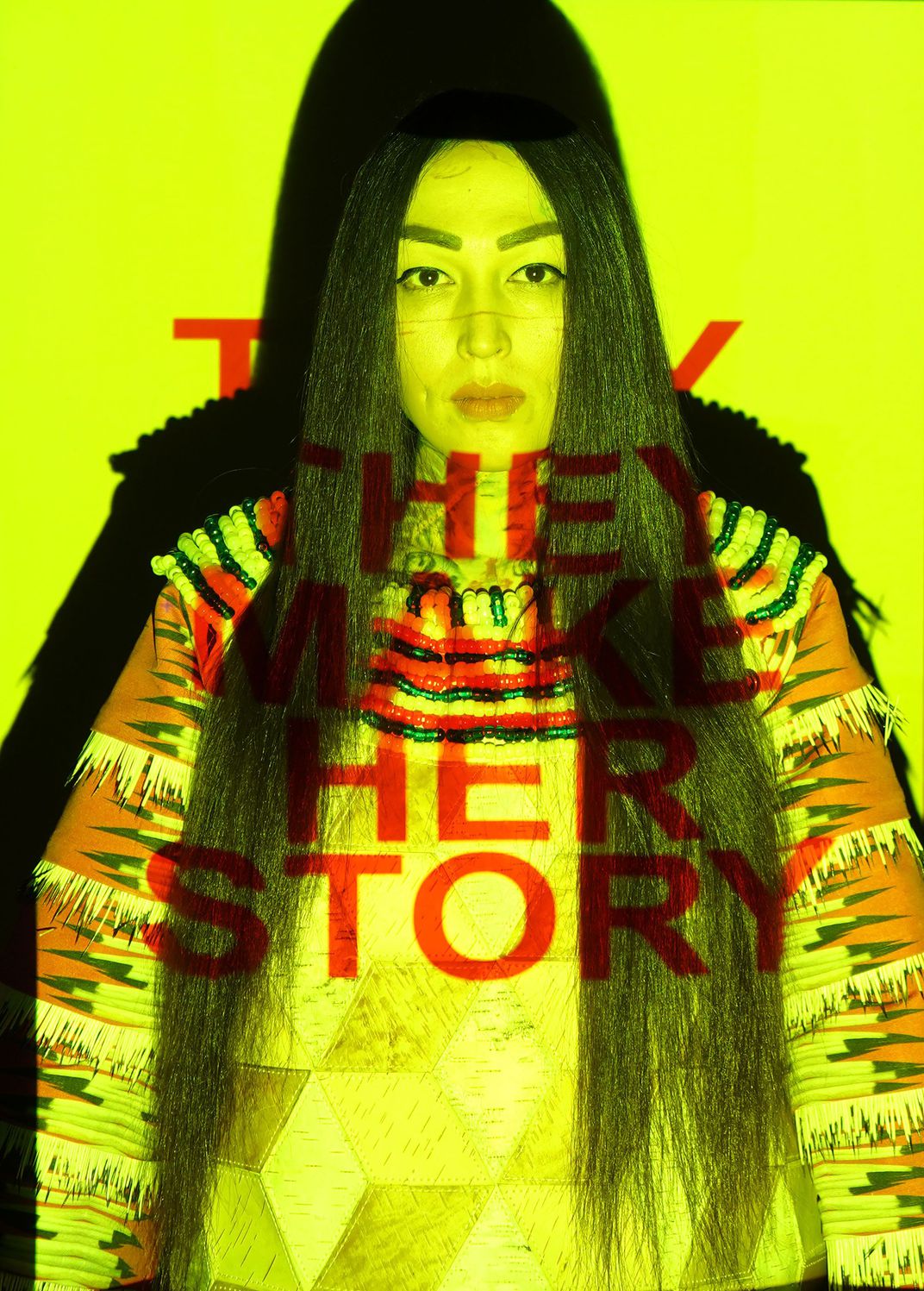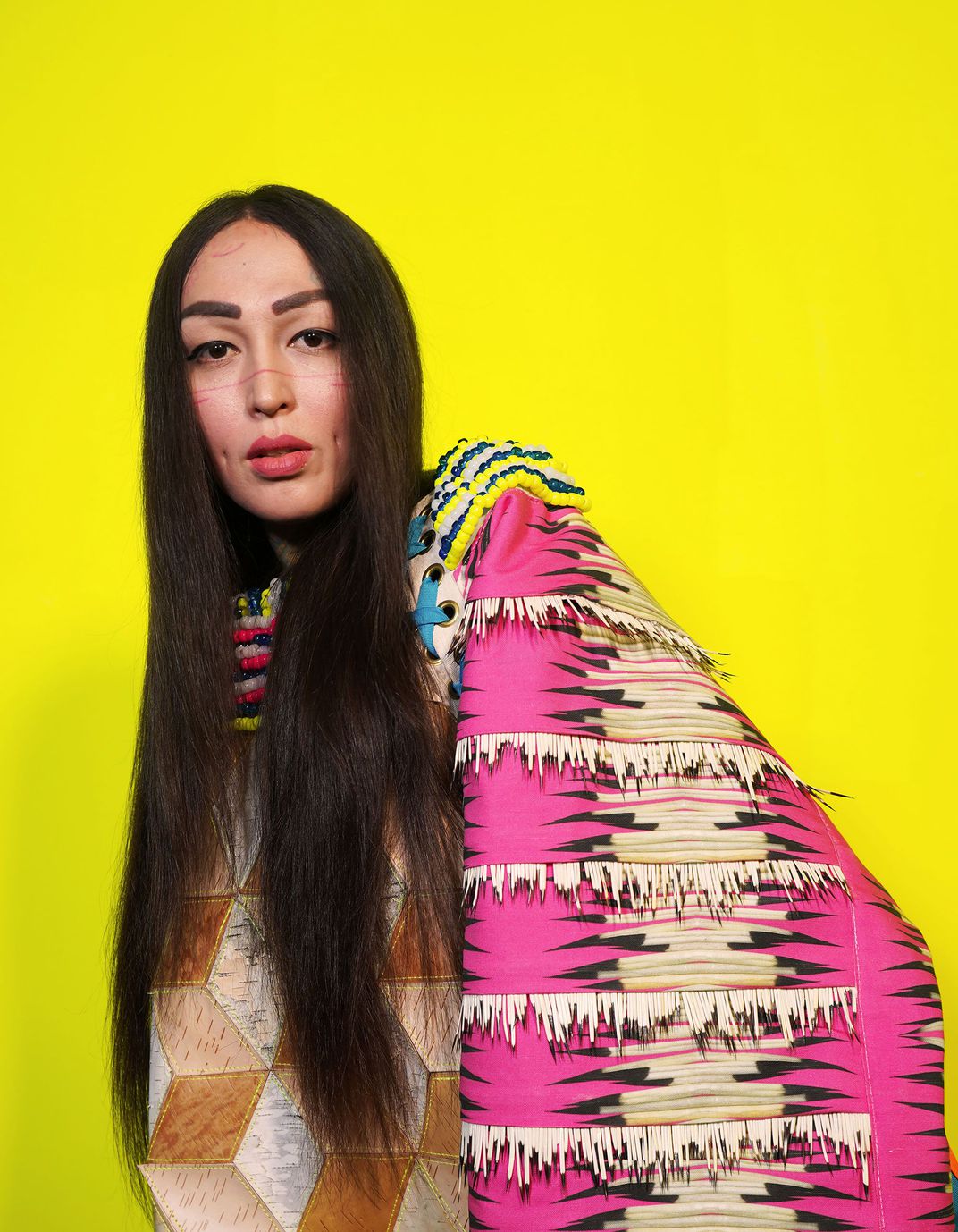ART NEWS
Artist Jeffrey Gibson’s Artwork Activates Overlooked Histories and Marginalized Identities | At the Smithsonian
[ad_1]
Artist Jeffrey Gibson, a half-Cherokee member of the Mississippi Band of Choctaw Indians, takes a multidisciplinary approach to his work—he is painter, sculptor, photographer and performer. His oeuvre is an artful mashup that challenges his audience to question cultural and political assumptions. For his material, he mines his Native-American heritage, his youthful exploration of nightclub subculture and his global education in Korea, Germany, England and other countries where he lived growing up. His artistic emphasis can be said to be a collaborative embrace of marginalized identities, nonconformists and societal outsiders.
Gibson particularly resonates in this moment in time. His artwork is layered in both the country’s history of cultural erasure and its present climate of divisive politics.
“As the times have become increasingly more political, people have begun projecting more politicalness into the work,” notes Gibson, whose most recognized artwork is a series of repurposed Everlast punching bags adorned with embroidery, multicolored glass beads, fluorescent nylon fringe, metal jingles and labeled with pop song lyrics. “And then I almost am responding back,” he says. “Because I am enjoying the conversation.”
Whether geometric paintings of acrylic and graphite on rawhide or dazzling, patterned tapestries, inspired by traditional quilting and an indigenous craft narrative, Gibson’s facility across mediums reflects a profound understanding of formal abstraction. Among his influences are American and European modernists, such as Sol Lewitt, Josef Albers and Bridget Riley. His work incorporates materials such as goat fur and deer hide, as well as most recently, the crafts of Algonquian birch biting and porcupine quillwork, practiced by tribes long before European settlers arrived.
Issues of colonization— both within museum walls and beyond—never stray far from Gibson’s mind. In his 2015 American History, a multi-colored wall hanging, he incorporated the text: “American history is longer, larger, more beautiful and more terrible than anything anyone has ever said about it.”
Born in Colorado Springs, Gibson, 47, the son of a U.S. Department of Defense engineer, recounts moving every two to three years during childhood, alighting in North Carolina, New Jersey, Germany and Korea. Educated at the Art Institute of Chicago and London’s Royal College of Art graduate program, Gibson studied painting throughout. But he cites the punk and rave culture of the club scene he took in while in his teens and 20s as being as influential to his artistry as his formal training. “Looking back at the music that was being played in the late 80’s and 90’s, what we were dancing to in a celebratory way was oftentimes a cry for help, talking about HIV explicitly in some of those lyrics,” explains Gibson. “But I realized that there was a reason why that music spoke to me. It spoke to me as a young, queer, non-white man.”
This week, Gibson brings that discourse to the Smithsonian’s National Portrait Gallery in Washington, D.C., with his multimedia choreography, titled “To Name An Other.” The performance features drums and 50 participants, who self-identify as indigenous, Native American, LGBTQ, or as people of color, outfitted in Gibson’s elaborate handmade garments.
It is the latest iteration of the museum’s “Identify” series. “We’re opening up what a portrait can be,” says the museum’s Dorothy Moss, who is curator of painting and sculpture, as well as Identify’s director.
Gibson is well suited to be the tenth commissioned “Identify” artist, joining others such as the renowned James Luna, Martha McDonald, J. J. McCracken, María Magdalena Campos-Pons and Wilmer Wilson. The purpose of the project is to shine light on gaps in the museum’s early collection, acknowledging those persons that are missing, says Moss. As museums throughout the U.S. grapple with long-standing institutional imbalances, “Identify” confronts racial absence in art and American history through the lens of performance.
“I’m really hoping that Gibson’s work will give those who felt silent during this political moment a voice,” Moss explains of the 50 volunteer-performers, as well as the text Gibson incorporates into the performance. Gibson’s brightly colored garments for each of the participants are paired with digitally printed slogans such as: “They Fight for Clean Water;” “Powerful Because They Are Different;” “Their Votes Count;” “They Speak Their Language;” “They Identify As She” and “Their Dark Skin Brings Light.”
The strategic use of text is a hallmark of Gibson’s aesthetic and recalls the works of Jenny Holzer and HIV-AIDS activist David McDiarmid.
“He is allowing people to be visible, who have felt unheard and vulnerable in our current climate,” says Moss.
Gibson’s use of native beadwork, quilt-inspired craftsmanship and protest slogans is being recognized for propelling contemporary art and social dialogue forward. But his creation of his first iridescent punching bag, the 2011 Everlast, was a deeply personal experience. Gibson recalls, an amorphous sense of frustration— questioning whether he even wanted to be an artist—during doctor recommended therapy. “By the end of the first session, there were lots of issues surrounding classicism, racism, homophobia, very specific to the art world in a way that was clearly the root of my frustrations,” he says. “Working with that therapist led to a physical trainer and then boxing, as a way to bring back together my mind and my body and to try to unify those things that felt very disjointed to me.”
For this year’s Whitney biennial, Gibson hung Keep on Moving (2019), a quilted flag-mural prominently in the museum lobby, above the ticket counters, with the statement: “Thank you for the space you hold. Know that you are loved. Keep on Moving. Don’t Stop.”
Visitors are confronted by the artwork’s prominent placement as they wait the 5 to 20 minutes it takes to purchase their entry passes. “It’s about saying what I think needs to be said, and what is the right thing to do,” Gibson says. “I feel it would have been irresponsible for me to not express some things with so big a platform like this.”
True to Gibson’s visual lexicon, the artist seizes the opportunity to empower viewers. Whitney Biennial co-curator and art historian Jane Panetta says Gibson’s text—a powerful fusion of art and language—is as much a protest of contemporary injustice, as it is a declaration of strength against inequity and prejudice. “While always grappling with tough issues about his queerness, about his being an indigenous artist,” Panetta says, “he’s always tried to ask, how can I grapple with these issues but think about a positive voice, a productive voice.”
This month in New York City, both the New Museum, where Gibson has been an artist-in-residence this past spring, and the Whitney Museum of American Art are showcasing Gibson’s garment-like works. For his June 8 encore presentation of “To Name An Other,” taking place at the New Museum, performers will again enliven his textiles through drumming, procession and motion to mark the close of Gibson’s residency. Referencing his deep interest in issues of appropriation and narratives of conflict, Gibson titled the final work of his residency program at the New Museum, The Anthropophagic Effect, after poet Oswald de Andrade’s 1928 “Anthropophagic Manifesto,” an essay about how communities should “devour” or cannibalize a colonizer’s culture in order to reject domination. The work includes four of his garments alongside Choctaw and Cherokee dresses, and an array of materials from plastic beads, nylon ribbons, brass grommets, dried pear gourds and baskets.
Always exploring new histories of indigenous craftsmanship, during his New Museum residency, Gibson took up Southeastern river cane basket weaving, for example. “Jeffrey is somebody who is really interested in how different cultural forms are constantly, always touching one another,” says the New Museum’s associate curator Sara O’Keeffe. “A big part of the garments that Jeffrey’s been making over the last few years is to think about them activated and not simply shown as artifacts in museums across the country.”
“Identify: Performance Art as Portraiture—Jeffrey Gibson: To Name An Other” takes place May 22, 2019 at 5 p.m. at the Smithsonian’s National Portrait Gallery in Washington, D.C.
[ad_2]
Source link



